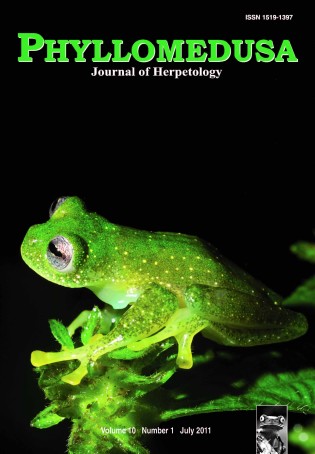Ontogenetic diversity and early development of frogs in the South American family Cycloramphidae
DOI:
https://doi.org/10.11606/issn.2316-9079.v10i1p07-13Keywords:
Anura, cleavage, diversity, evolution of development, Rhinoderma, South AmericaAbstract
Literature describing peculiarities of development in cycloramphid frogs is reviewed. This study reports data on sizes and pigmentation of eggs, the morphology of early cleavage, sites of embryo and tadpole development (in water or on land), larval nutrition (exotrophic or endotrophic), and the occurrence of brooding. Despite the moderate number of species, this family is ontogenetically diverse, with repeated modifications of ontogenesis. The focus is on the development of frogs in the genus Rhinoderma, the early cleaving embryos of which are less modified than early embryos of many other frogs. The peculiarities of development in the family Cycloramphidae are compared with those in representatives of other families of anurans.Downloads
Download data is not yet available.
Downloads
Published
2011-06-01
Issue
Section
Review Article
License
All material originally published in Phyllomedusa belongs to Escola Superior de Agricultura Luiz de Queiroz - Universidade de São Paulo. All contents are under a license of Creative Commons BY-NC-ND.How to Cite
Desnitskiy, A. G. (2011). Ontogenetic diversity and early development of frogs in the South American family Cycloramphidae. Phyllomedusa: Journal of Herpetology, 10(1), 07-13. https://doi.org/10.11606/issn.2316-9079.v10i1p07-13



 Impact Factor (JCR): 0.600
Impact Factor (JCR): 0.600 CiteScore: 1.0
CiteScore: 1.0